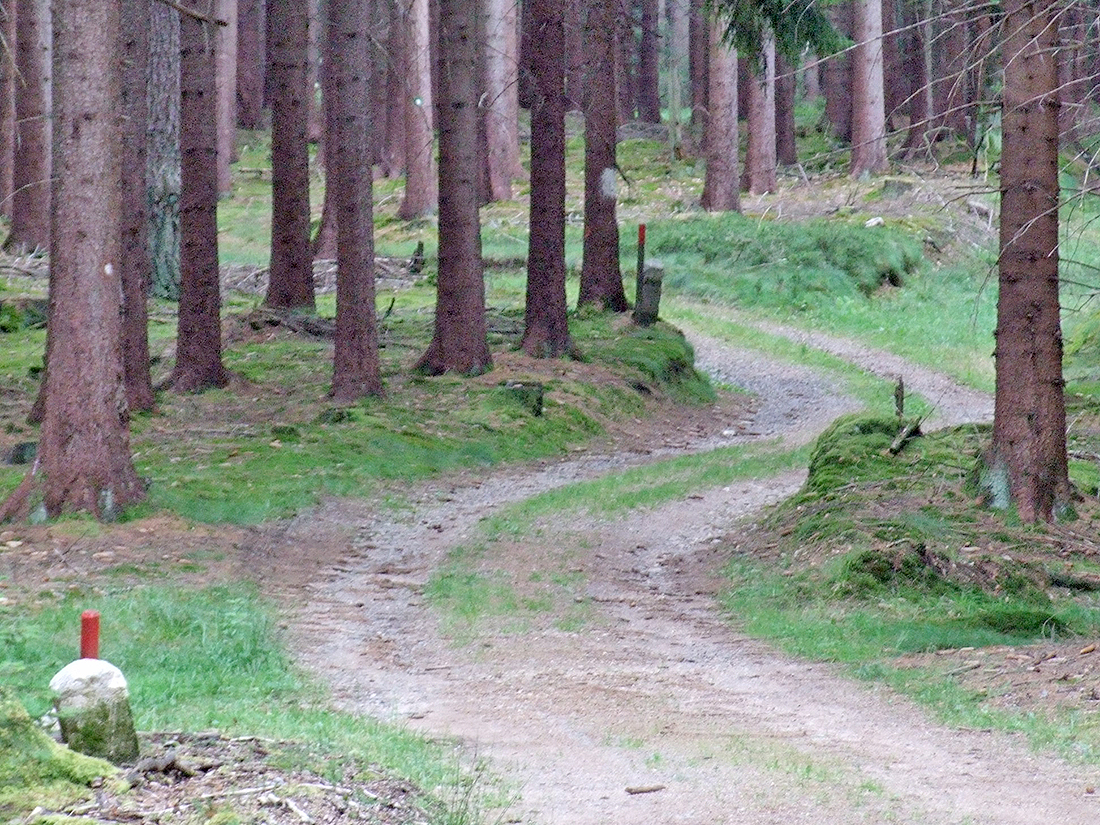Until several years ago, the “Rainbuche”, a mighty old beech, stood at this unimpressive place on the historic road on the saddle between the “Birken-“ and “Heidelberg” mountains. Beeches for themselves are not very important as a natural monument. More important are their significance as pre-eminent solitary tree and their importance as landmark. The “Rainbuche”, too, marked an important place. Here runs the border between Bad Neualbenreuth and Tirschenreuth, and here also lies the boundary of the historic “Egerer Stadtwald” forest. In former times, this was the border between the property of the monastery of Waldsassen and the free imperial city of Eger. Since 1591 this was also the border point of the so called “Fraisch”. Thus it also marked the border of jurisdictional competence, (which, for more than 300 years, changed annually between Waldsassen and Eger).
The road link has been existing for centuries and has made the extensive woods accessible. The road started at the former provostry Hohenstein (St. Nicholas church), founded in 1118, lead further to the chapel “Alter Herrgott”, went over the “Birkenberg” right to this place with the “Rainbuche” border tree, on to Wernersreuth and, past the forest chapel “Hartl-Kapelle” to Waldsassen, founded in 1133. It was the shortest connection between the both possessions of margrave Diepold III of Vohburg (1075-1146).
The name “Rainbuche” comes from the Old High German word “Rhein” (as also in “Rinnlbrunnen” or “Ringelfelsen”) for a plot or field border or the field margin, respectively the place between one field terrace and the next. On the old boundary stone from around 1862 next to the stump of the beech the number 203 is still discernible. You can find the associated number 1 near the village “the Kornmühle”.


